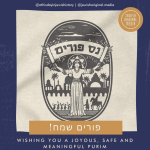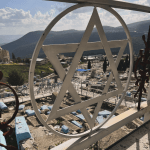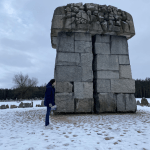Exploring Jewish History: The Libyan Pogrom of 1945 and its Aftermath
Today, we delve into a crucial chapter of Jewish history, marked by the Libyan Jewish Pogrom 1945. Taking place between November 5-7, the horrifying violence unfolded in Tripoli, resulting in over 140 Jewish fatalities. This tragic event did not transpire in a vacuum; instead, it was the culmination of a series of oppressive circumstances that had been brewing since Libya’s colonization by Italy in 1911.
Pre-Pogrom Jewish Life in Libya
Prior to the introduction of anti-Jewish laws, the Jewish community experienced a period of growth and prosperity in Libya. By 1939, the Jewish population in Libya was over 30,000, predominantly residing in Tripoli and constituting nearly one-quarter of the city’s population.
Italian Fascism and Its Impact on Libyan Jews
Unfortunately, under Italy’s fascist regime, anti-Jewish “Race Protection Laws” began to be introduced in Libya in 1938, taking effect by 1940. These laws led to Jewish civil servants losing their jobs, Jewish children being barred from Italian schools, marriages between Jews and non-Jews being prohibited, and Jews were mandated to carry identification papers indicating their “Jewish race.”
Libya During World War II
The Libyan Jewish Pogrom 1945 was preceded by a turbulent period from 1940-1943, wherein Libya changed hands between the Axis and Allied forces repeatedly. German troops, in 1942, seized the Jewish quarter of Benghazi. Depending on their citizenship and their location within Libya, Jews were dispatched to forced labor camps and concentration camps, predominantly in the Libyan desert, with some sent as far away as Bergen-Belsen in Europe.
The Pogrom and British Role
On January 23, 1945, with the return of Libya to British control, both Jews and Muslims initially held high hopes for a peaceful future. However, these aspirations soon gave way to apprehension due to political uncertainties. On November 5, violence erupted throughout Tripoli. Alarmingly, there are indicators that the British may have instigated the violence for their political benefit, with Jewish defense groups’ weapons being confiscated just before the riot.
Aftermath of the Pogrom
During the riots, the chilling war cry of “jihad fil-kuffar,” or “war against the infidels,” reverberated. Although there were instances of Muslims sheltering Jews, the pogrom’s impact was devastating. Over 140 Jews were killed, hundreds injured, nine synagogues burned down, and 35 Torah scrolls destroyed. This event marked the beginning of ethnic cleansing of Jews from Libya, with subsequent pogroms occurring in 1948 and 1967. By 2003, the last known Jew in Libya, Rina Debach, had departed, marking an end to the Jewish presence in Libya.
Resources
For more details on this historical event, check out these resources:












